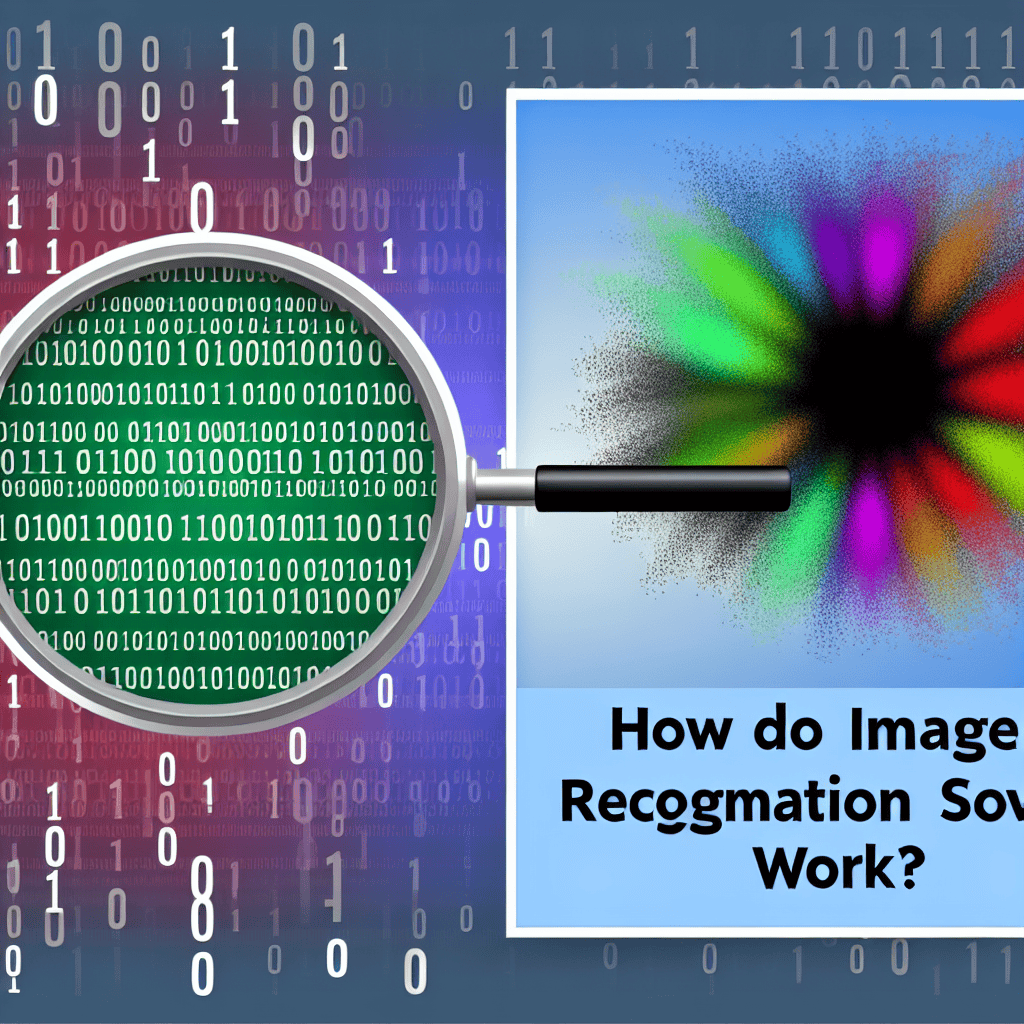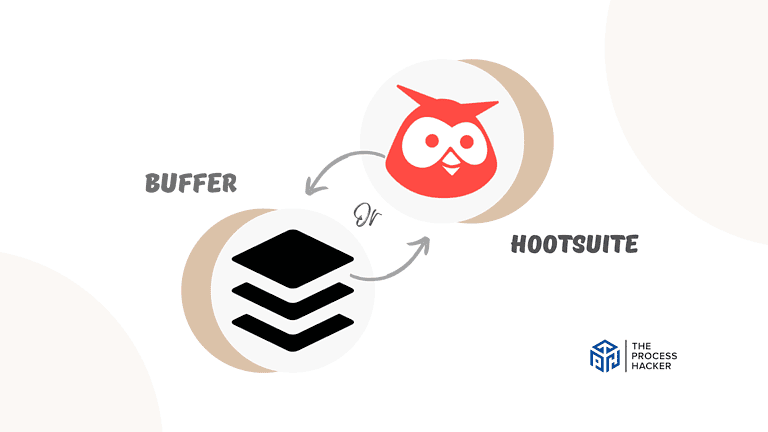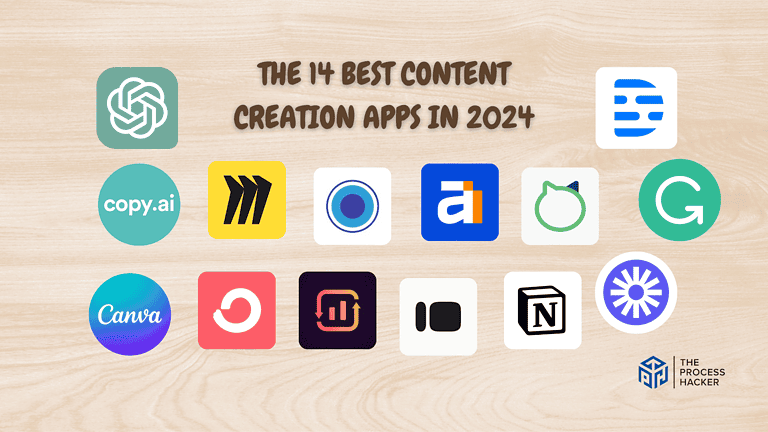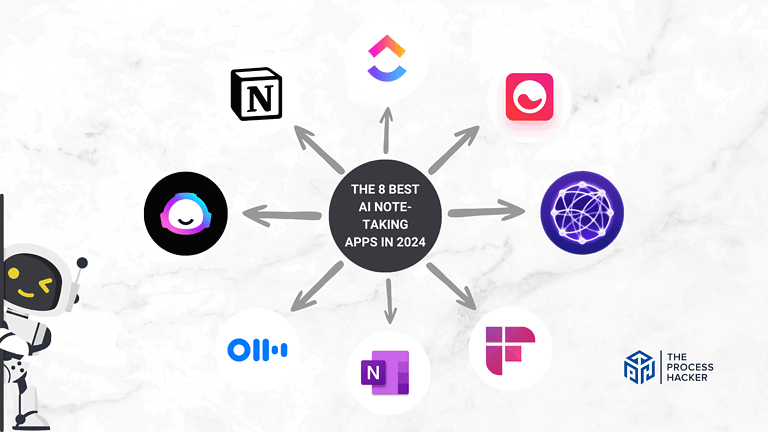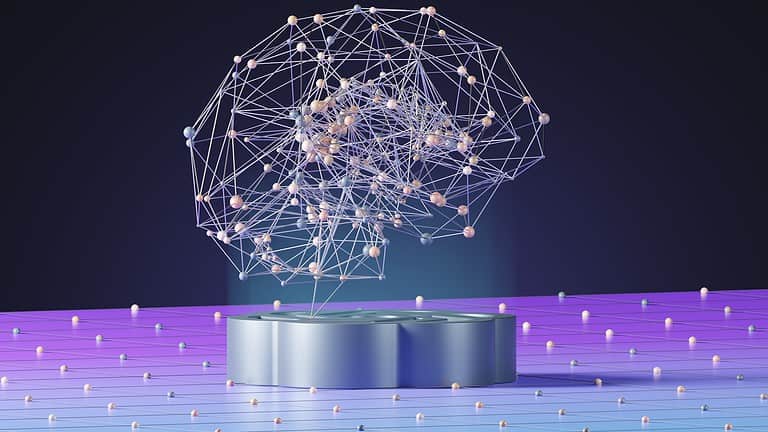How Does Image Recognition Software Work? A Comprehensive Business Guide
Did you know that the global image recognition market is projected to reach a staggering $81.88 billion by 2026? This technology is already profoundly shaping our world, from self-driving cars navigating busy streets to social media platforms automatically tagging your friends in photos. Imagine the possibilities for your business!
Understanding the mechanics of image recognition software is more than just a tech curiosity—it’s a strategic advantage for businesses. Whether you’re an e-commerce giant streamlining product tagging or a healthcare provider revolutionizing diagnostics, image recognition technology can transform your operations.
But what exactly is image recognition, and how does it work its magic? In this comprehensive guide, we’ll break down the complex algorithms and processes, offering insights into the real-world applications that can propel your business forward.
What is Image Recognition Software?
Image recognition software is the digital equivalent of the human visual system, enabling computers to identify and understand objects, scenes, and even emotions within images or videos. It’s about teaching machines to “see” and interpret the world as we do, though with the added benefit of speed, accuracy, and scalability.
The roots of image recognition trace back to the early days of artificial intelligence, where scientists dreamt of creating machines that could mimic human perception. Over the decades, advancements in computer vision, machine learning, and artificial intelligence have fueled the rapid evolution of this technology.
Today, image recognition is more than just a scientific curiosity; it’s a practical tool transforming industries worldwide. This technology, often developed with the help of image recognition software development services, leverages complex algorithms and machine learning techniques to identify patterns, objects, and features in images.
How Are the Key Components of Image Recognition Software?
So, how does this technology work its magic? It’s a symphony of three key components:
- Computer vision: This field focuses on extracting meaningful information from visual data, essentially teaching computers to “see.”
- Machine learning: Here, algorithms learn from vast amounts of data, recognizing patterns and making predictions based on those patterns.
- Artificial intelligence: The broader umbrella under which machine learning resides, AI image recognition software enables machines to exhibit intelligent behavior, often surpassing human capabilities in specific tasks.
When you combine these elements, image recognition software can identify objects, classify images, detect faces, analyze emotions, and even generate captions—all without human intervention.
How Does Image Recognition Work?
Next, let’s understand the step-by-step process that transforms digital images into valuable insights. At its core, image recognition involves a series of carefully orchestrated steps:
- Image acquisition: The process begins with capturing an image, either from a camera, scanner, or existing digital file. This raw image, composed of countless pixels, serves as the starting point for analysis.
- Pre-processing: To ensure optimal results, the image often undergoes pre-processing, which may include resizing, cropping, noise reduction, or enhancing contrast. This step prepares the image for the subsequent computational heavy lifting.
- Feature extraction: Here’s where the magic begins. Algorithms analyze the image, identifying key features like edges, corners, shapes, and textures. These features serve as the building blocks for recognition.
- Pattern recognition: Armed with extracted features, the software compares them to patterns learned from vast training data. Think of it as matching puzzle pieces – the more pieces that fit, the higher the confidence in the identification.
- Classification or labeling: The software classifies the digital image or assigns labels to specific objects or regions based on pattern recognition. This is where the image transforms from a collection of pixels to a meaningful representation.
Digital images, graphics, and visual data play a pivotal role throughout this process. These digital representations, composed of pixels, provide the raw material for analysis. But it’s not just about the images themselves; it’s about the metadata associated with them. This includes information about the image’s origin, capture settings, and any relevant annotations.
Training data, particularly labeled images, is the lifeblood of image recognition software. These annotated images, where objects or regions are manually identified, serve as the learning ground for algorithms. The more diverse and extensive the training data, the more accurate and robust the recognition capabilities become.
Now that you understand the inner workings of image recognition let’s explore the powerful algorithms that drive this technology, each with its unique strengths and applications.
The Science Behind Image Recognition Software
Let’s look closer at the underlying science that makes it all possible.
Computer Vision: The Foundation of Image Recognition
Computer vision, the cornerstone of image recognition, is the field dedicated to enabling computers to extract meaning from visual data. Think of it as giving machines the gift of sight but with capabilities far beyond human vision.
Computer vision algorithms attempt to replicate how the human visual system works, albeit with a digital twist. While we recognize objects and scenes effortlessly, computers rely on complex mathematical models and algorithms to interpret and analyze visual inputs.
These algorithms break down images into their fundamental components, such as pixels, edges, and textures. Then, through intricate calculations, they identify patterns, extract features, and ultimately recognize objects or scenes within the image.
However, there are some key differences between human vision and computer vision. While humans possess an innate understanding of the world, honed through years of experience, computers rely solely on the data they’ve been trained on. Additionally, while we can effortlessly grasp the context and meaning behind an image, computers struggle with abstract concepts of data science and rely on concrete visual cues.
Nevertheless, advancements in computer vision continue to blur the lines between human and machine perception. From self-driving cars navigating complex environments to medical image recognition systems detecting subtle anomalies, computer vision pushes the boundaries of what’s possible.
Next, let’s explore the crucial role of machine learning in empowering photo recognition tools to learn and adapt, just like we do.
Machine Learning and Deep Learning in Image Recognition
Machine learning is a subset of artificial intelligence that enables systems to learn from data and improve their performance on a specific task without being explicitly programmed. In the context of image recognition, machine learning algorithms are trained on vast datasets of labeled images, allowing them to identify patterns and features associated with specific objects or categories.
Deep learning, a more advanced form of machine learning, utilizes artificial neural networks inspired by the human brain. These networks consist of interconnected layers of nodes, or “neurons,” that process and analyze visual information. Deep learning models excel at handling complex image recognition tasks, enabling them to identify subtle details and make accurate predictions even in challenging scenarios.
Image recognition software is constantly learning and evolving. As it processes more and more data, its algorithms become increasingly sophisticated, leading to improved accuracy and performance. Feedback loops and ongoing training drive this continuous learning process, allowing the software to adapt to new image variations and improve its ability to generalize from existing knowledge.
Key Features and Capabilities of Image Recognition Software
Now that we have a grasp of the broader picture, let’s zoom in on the most fundamental capabilities of image recognition software:
1) Object Detection and Classification
Image recognition software is all about identifying and understanding an image’s content. Object detection and classification is locating and labeling specific objects within an image. Imagine you’re looking at a photo of a busy street.
The software can pinpoint individual cars, pedestrians, traffic lights, and even street signs and label each one accordingly. This capability has far-reaching implications for businesses across various sectors.
2) Facial Recognition and Biometrics
| Aspect | Facial Recognition | Biometrics |
| Definition | A technology that identifies and verifies individuals based on their facial features. | A broader technology category that identifies individuals based on physical or behavioral characteristics includes facial recognition, fingerprints, iris scans, voice recognition, and more. |
| Use Cases | It varies but is generally high as it involves sensitive personal data; concerns increase with technologies like fingerprints and iris scans that require personal interaction. | Used for access control, time attendance systems, law enforcement, banking authentication, and personal device security. |
| Privacy Concerns | High, as it involves capturing and analyzing facial features, often without explicit consent. | It varies, but it is generally high as it involves sensitive personal data; concerns increase with technologies like fingerprints and iris scans that require personal interaction. |
| Accuracy | High, but can be affected by changes in lighting, facial expressions, and angles. | Generally very high, particularly with methods like fingerprints and iris recognition, which are less susceptible to environmental variations. |
| Technology | Involves cameras and image processing algorithms to detect faces. | It involves various sensors and scanning technologies, depending on the trait being measured (e.g., optical, capacitive, infrared). |
| Ease of Use | Very user-friendly as it does not require physical contact and can be performed from a distance. | The ease of use varies; some methods, like fingerprint scanning, require physical contact, while others, like voice recognition, do not. |
| Adoption Rate | Rapidly increasing in consumer electronics and public surveillance. | Widely adopted in various industries, particularly in mobile devices and high-security areas. |
This table outlines facial recognition technology’s primary differences and features versus general biometric technologies.
3) Optical Character Recognition (OCR)
Ever wished you could magically convert printed or handwritten text into editable digital text? That’s precisely what OCR does. It analyzes the shapes and patterns of characters within an image and translates them into machine-readable text. This opens up possibilities, from digitizing paper documents to making information more accessible for people with visual impairments.
OCR has become an indispensable tool for businesses that deal with large volumes of paperwork. It streamlines processes and saves countless hours of manual data entry. Imagine effortlessly extracting data from invoices, receipts, or legal documents with a few clicks—that’s the power of OCR at your fingertips!
Image Recognition Models and Algorithms
Behind the scenes, image recognition software relies on a complex network of models and algorithms to make sense of visual data. These models are like the brains of the operation, constantly learning and adapting to recognize patterns and make accurate predictions. Let’s explore some of the most popular ones.
Popular Image Recognition Models
You’ll often hear names like Convolutional Neural Networks (CNNs), Recurrent Neural Networks (RNNs), and Support Vector Machines (SVMs) thrown around in discussions about image recognition. These models have proven incredibly effective in tackling various image recognition tasks.
CNNs, in particular, have gained significant popularity due to their ability to learn hierarchical features from images automatically. They’re like master detectives, meticulously examining each layer of an image to identify key characteristics and make informed decisions.
Training and Fine-tuning Image Recognition Algorithms
Think of training an image recognition model as teaching a child to recognize different objects. You show them numerous examples and provide feedback, and gradually, they learn to distinguish between a cat and a dog, a car and a bicycle. Similarly, image recognition models are fed massive datasets of labeled images, allowing them to identify patterns and features associated with specific objects or categories.
Fine-tuning takes this further by customizing a pre-trained model for a specific task. It’s like training a skilled athlete for a particular sport. By focusing on a narrower domain, the model can achieve even higher accuracy and performance in recognizing specific objects or scenarios relevant to your business needs.
Training and fine-tuning require significant computational power and expertise, but the results are worth the investment. A well-trained model can become a valuable asset, automating tasks, improving efficiency, and unlocking new opportunities for your business.
Applications of Image Recognition for Small Businesses
Image recognition isn’t just for tech giants or large corporations. Even small businesses can harness its power to streamline operations, enhance customer experiences, and gain a competitive edge. Let’s explore some real-world examples.
Inventory Management and Retail
Imagine walking into a retail store where you can simply snap a photo of a product and instantly see its availability, price, and customer reviews. Image recognition makes this possible by enabling visual search capabilities. Customers can quickly find what they’re looking for, leading to increased sales and improved customer satisfaction.
On the backend, image recognition can revolutionize inventory management. By automating the process of tracking and counting stock, you can save valuable time and reduce errors. The software can even identify damaged or misplaced items, ensuring your inventory is always accurate and up-to-date.
Marketing and Content Moderation

Image recognition can supercharge your marketing campaigns by providing valuable insights into customer behavior and preferences. For example, you can analyze social media images to see how people interact with your brand or products. This helps you understand what resonates with your audience and tailor your marketing strategies accordingly.
Additionally, image recognition can play a crucial role in content moderation. By automatically identifying and flagging inappropriate or offensive images, you can maintain a positive and safe environment for your online community. This protects your brand reputation and fosters trust and engagement among your customers.
Quality Control and Manufacturing
Maintaining high product quality is crucial for any business but can be time-consuming and labor-intensive. Image recognition offers a solution by automating visual inspections. Imagine a camera system on your production line that can instantly detect product defects or inconsistencies. This helps you identify and address issues early on, reducing waste and ensuring that only top-quality products reach your customers.
Implementing Image Recognition in Your Small Business
You might wonder if integrating image recognition into your operations requires a team of tech experts and a hefty budget. The good news is that it’s more accessible than you might think.
Cloud-based Image Recognition APIs
Cloud-based image recognition APIs offer a convenient and cost-effective way to get started. These APIs provide pre-trained models and ready-to-use functionalities that you can easily integrate into your existing applications or workflows. Think of them as plug-and-play solutions that allow you to harness the power of image recognition without building everything from scratch.
With cloud-based APIs, you can access advanced image recognition capabilities on demand, scaling your usage as your business grows. This eliminates the need for upfront investments in infrastructure or specialized expertise, making it a practical choice for small businesses with limited resources.
Developing Custom Image Recognition Solutions
Developing a custom image recognition model might be the best option for businesses seeking a highly customized solution. This involves gathering and annotating your dataset, training the model, and fine-tuning it to achieve optimal performance for your needs.
While this approach requires more technical expertise and resources, it offers greater flexibility and control. You can tailor the model to recognize objects, patterns, or scenarios critical to your business. This level of customization can lead to significant improvements in accuracy and efficiency, giving you a competitive advantage in your industry.
Challenges and Considerations
While image recognition offers numerous benefits, knowing its limitations and potential pitfalls is essential.
Technical Limitations and Accuracy
Even the most sophisticated image recognition models need to be foolproof. They can be sensitive to variations in lighting, image quality, and object orientation. For instance, a model trained to recognize cars from a specific angle might struggle to identify the same car from a different perspective.
Additionally, achieving high accuracy requires a substantial amount of training data. The more diverse and representative your dataset, the better the model will perform in real-world scenarios. Investing time and effort in curating a high-quality dataset covering various variations and potential challenges is essential.
Data Privacy and Security Concerns
Image recognition often involves processing sensitive data, such as faces or personal information. Handling this data responsibly and ensuring compliance with relevant privacy regulations is crucial. Obtain explicit consent from individuals before capturing or processing their images, and implement robust security measures to protect data from unauthorized access or breaches.
Transparency is key. Communicate to your customers how their data will be used and stored and give them the option to opt-out if they prefer. By prioritizing data privacy and security, you build trust and demonstrate your commitment to ethical business practices.
Future Trends in Image Recognition Technology
The field of image recognition is constantly evolving, with breakthroughs and innovations emerging rapidly. Let’s explore some of the trends shaping this technology’s future.
Emerging Technologies and Innovations
One area to watch is the development of more efficient and lightweight models that can run on edge devices like smartphones and cameras. This will enable real-time image recognition capabilities without relying on cloud-based processing, opening up new possibilities for mobile applications and on-the-go solutions.
Another exciting trend is integrating image recognition with other technologies, such as augmented reality (AR) and virtual reality (VR). Imagine overlaying digital information in the real world or creating immersive experiences that respond to your gestures and movements. The possibilities are endless.
Furthermore, explainable AI (XAI) advancements make image recognition models more transparent and understandable. This means you’ll be able to gain insights into how the model arrived at its conclusions, fostering trust and enabling more informed decision-making.
Preparing Your Business for the Visual AI Revolution
Image recognition is no longer a futuristic concept; it’s a reality transforming industries worldwide. To stay ahead of the curve, embracing this technology and exploring its potential applications for your business is essential.
Identify areas where image recognition can streamline operations, enhance customer experiences, or create new revenue streams. Experiment with different solutions, whether integrating cloud-based APIs or developing custom models. Stay informed about the latest trends and advancements in the field, and be prepared to adapt as the technology evolves.
Remember, the visual AI revolution is here. By embracing image recognition, you can unlock new opportunities, gain a competitive edge, and propel your business into the future.
Final Thoughts on Image Recognition Software
Image recognition software is a testament to the remarkable advancements in artificial intelligence and computer vision. Its capabilities extend beyond simple object identification, empowering businesses to automate tasks, enhance customer experiences, and make more informed decisions.
From inventory management to marketing and quality control, the applications are vast and continue to expand as technology evolves. While challenges like accuracy and data privacy persist, the potential benefits of image recognition are undeniable.
By embracing this transformative technology and staying abreast of emerging trends, businesses can position themselves at the forefront of innovation and unlock new opportunities for growth and success in the digital age.

